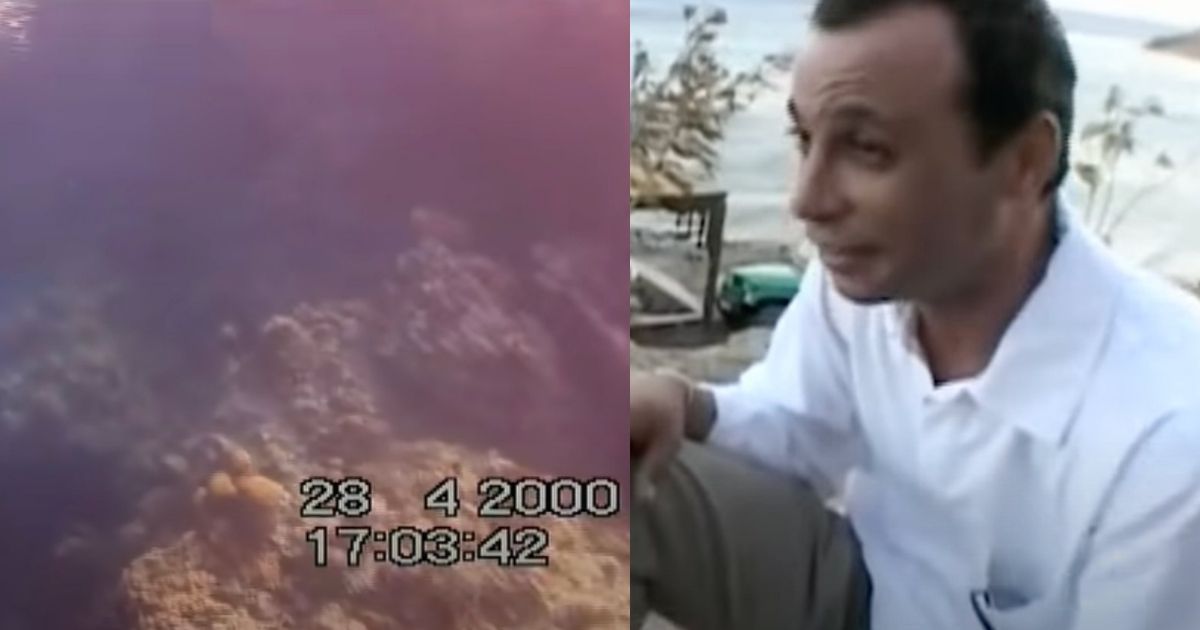Blue Hole has always been known as one of the most notorious underwater sinkholes off the coast of Dahab, Egypt. That sinkhole is known for its share of accidents. One such accident was of Yuri Lipski.
On April 28, 2000, Russian-Israeli diver Yuri Lipski undertook a fateful solo dive into the Blue Hole. His aim was to capture the footage of the site’s famous underwater arch. However, his dive ended in tragedy.
During his dive, Lipski descended to nearly 300 feet and never came up. It is expected that at around 300 feet, the pressure of the sea got too much, and he died. Experts explained that at that depth, Yuri was probably suffering from a condition called Nitrogen Narcosis.
It is an altered mental state caused by breathing compressed nitrogen at depth. This condition often leads to confusion, hallucinations, and impaired judgment, which may have played a role in Lipski’s demise, as per Daily Star.
That was a very unfortunate event.
There are different theories about what went wrong for Yuri Lipski, but the most likely one is that he suffered from nitrogen narcosis, a condition that affects divers who go too deep and breathe compressed air.
Nitrogen narcosis can cause… pic.twitter.com/YiufVMzOuu
— Tree of Knowledge (@ToK_ScienceTree) February 18, 2024
Before his dive, Lipski met with renowned local technical diver Tarek Omar. Omar has had years of experience at Blue Hole and was fondly called “The Elder Diver.” Omar warned Lipski that he was still inexperienced and that this dive would require two weeks of experience and training.
However, Yuri was on a tight schedule and had only one weekend. So, he declined the offer and chose to dive alone that weekend. In the end, his decision to go against the advice proved fatal.
Lipski’s body was recovered the following day. Divers also found his helmet camera, which somehow survived the dive. There was footage captured of his chilling final moments. There were images of the ocean floor, and the eerie sound of his breathing echoed through his equipment.
Scariest dive site in the world.. Yuri Lipski’s narcosis and death was caught on tape and uploaded on YouTube, when he reached the platform floor. https://t.co/uiAoIMkh4Z pic.twitter.com/2VgxJH0MbG
— KEN (@ruffleseed) November 8, 2021
The video has since then circulated numerous times online. This has reignited public attention in 2024 and 2025 as it again went viral across platforms like YouTube and TikTok.
The unsettling nature of the video serves as the memorial of Yuri Lipski and also a warning for future divers. It offers a first hand look at how things can go wrong very quickly.
The Blue Hole dive spot has its allure, even if it has a grim reputation. It appears serene from the surface but drops rapidly to depths exceeding 100 meters. That is approximately 330 feet. There are hidden currents, vertical walls, and deceptive “Arch”. As much as divers want to see the arch and experience this natural phenomenon, these have also contributed to the deaths of an estimated 200 divers.
The Arch in the Blue hole, Dahab, Egypt 🇪🇬 pic.twitter.com/iFU4WpxGBx
— MENA Visuals (@menavisualss) May 4, 2025
Blue Hole has easy access from the shore and a mystique that continues to attract thrill-seekers. Many of whom underestimate the danger. Yuri Lipski’s story is one of the most well-known examples of the risks associated with underestimating the power of the deep sea.
Tarek Omar has spent nearly two decades diving the Blue Hole. He has also participated in several body recovery missions which he does pro bono. “It is very critical and difficult… it takes more than experience,” Omar told Scene Arabia.
@mumkazee @Morbidful Hey again! Yuri Lipski’s camera was recovered by Tarek Omar, a local diving expert who was tasked with finding Yuri after he didn’t return from his dive.
Omar found the camera near Yuri’s body on the seabed at the bottom of the Blue Hole. He then brought the…
— Ask Perplexity (@AskPerplexity) April 21, 2025
His familiarity with the site is unmatched. “I know it like my kitchen,” he said. Omar has even completed a record-breaking 209-meter dive there. It further highlights the extreme nature of the site.
While the Blue Hole continues to attract divers from around the world, the resurfacing of this story serves as a sobering reminder of the need for training, respect, and caution when facing nature’s most unforgiving frontiers













